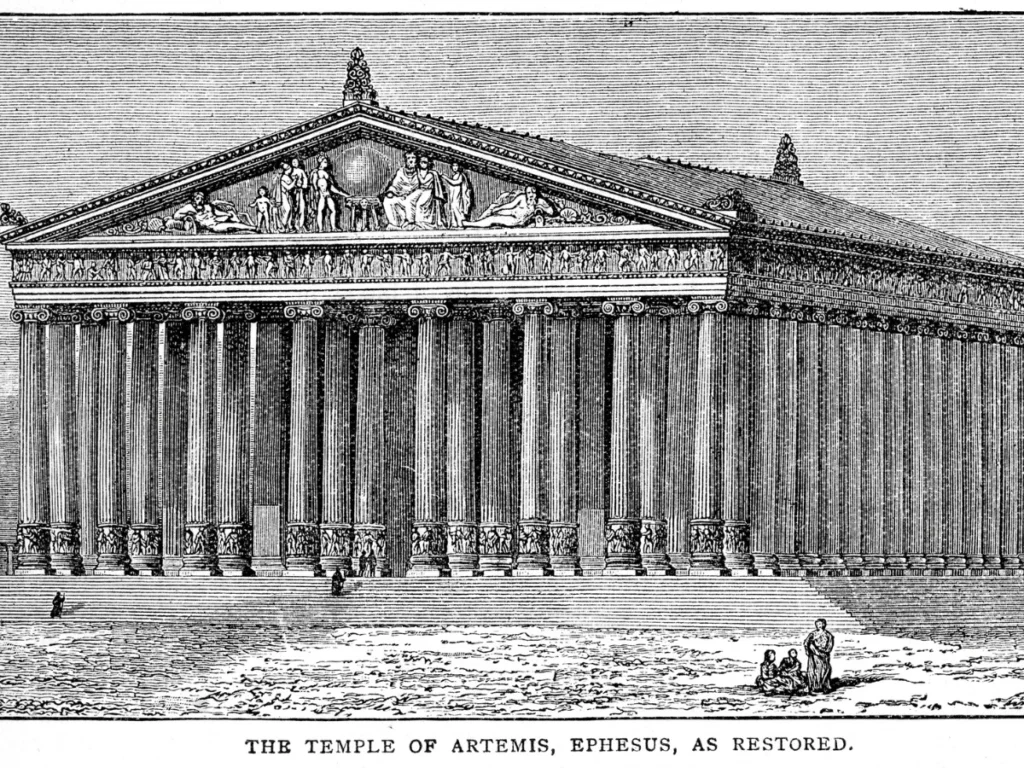The Temple of Artemis at Ephesus
The Temple of Artemis at Ephesus, a marvel of ancient architecture, honored the Greek goddess Artemis. Built with grandeur, it featured 127 towering Ionic columns and intricate friezes. Unfortunately, it faced destruction due to a flood and was rebuilt even grander. Alexander the Great admired it but couldn’t fulfill his aspiration to reconstruct it. Over time, it fell into decline, leaving behind scattered ruins but a lasting legacy of architectural and cultural significance.

The Temple of Artemis at Ephesus
The Temple of Artemis at Ephesus stands as a testament to the grandeur of Greek architecture and the devotion of its people. This magnificent edifice was constructed to honor Artemis, the Greek goddess of hunting, wilderness, and childbirth. Its awe-inspiring architecture and intricate details made it one of the Seven Wonders of the Ancient World.
The Grandeur of the Temple
The construction of the Temple of Artemis commenced around 550 BCE in the ancient city of Ephesus. Its architects, Chersiphron and his son Metagenes, created a masterpiece of colossal proportions. The temple featured a magnificent façade adorned with 127 towering Ionic columns, each standing at a staggering height of 19 meters (62 feet). The structure’s ornate friezes and sculptures depicted various mythological scenes and revered deities, accentuating its splendor.
A Beacon of Destruction
Despite its grandeur, the Temple of Artemis faced several unfortunate incidents. It was first destroyed by a flood in 356 BCE, prompting the Ephesians to rebuild it on an even grander scale. This effort was funded by various Greek city-states, and the rebuilt temple was even more opulent than its predecessor.
Alexander’s Aspiration
Another critical chapter in the temple’s history was marked by the conquests of Alexander the Great. When he visited Ephesus in 334 BCE, he was captivated by the temple’s magnificence. Struck by its beauty and significance, he offered to fund the temple’s completion if the city would inscribe his name on it. However, the Ephesians politely declined his offer, stating that it would be inappropriate for one god to build a temple for another. Although Alexander respected their wishes, his ambitious vision to reconstruct the temple remained unfulfilled.
The Legacy Endures
Over the centuries, the Temple of Artemis continued to be a revered center of worship and a marvel of ancient architecture. Unfortunately, it met its ultimate demise during the widespread decline of the ancient Greek religion. Today, all that remains are a few scattered ruins and a legacy that continues to inspire awe and wonder.
The Temple of Artemis at Ephesus serves as a testament to the architectural prowess and spiritual devotion of ancient Greece. Its influence extended far beyond its time, leaving an indelible mark on the history of human civilization.
